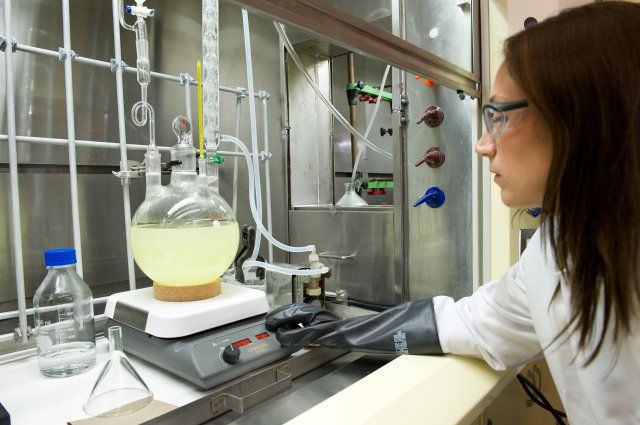A wearable to detect chemical weapons
By Elisabeth Eaves | October 11, 2018
 Jennifer Exelby leads a team of chemical-agent handlers at the US Army’s Edgewood Chemical Biological Center. Photo Credit: US Army
Jennifer Exelby leads a team of chemical-agent handlers at the US Army’s Edgewood Chemical Biological Center. Photo Credit: US Army
One of the insidious things about chemical weapons is that they can be invisible to the naked eye. Encountered in small doses, floating on the air, they can leave soldiers mysteriously sickened without knowing why.
To deal with this problem, the US Army is investing in a new device that can be worn as a patch to detect “chemical, biological and other hazards in the vapor phase,” reports C4ISRNET. The sensor patch will gather samples without need for a power supply, then technicians will apply chromatography—a technique that separates elements of a mixture—to distinguish among as many as 1,000 separate compounds. The process will be able, for instance, to distinguish a nerve agent like VX from a common pesticide.
Scientists at the US Army’s Edgewood Chemical Biological Center in Maryland are developing the new sensor. While there have been other efforts to make a wearable that picks up toxins in the environment, this one is designed to be more accurate than its predecessors. The National Guard is trying out a prototype version.
Publication Name: C4ISRNET
To read what we're reading, click here
Together, we make the world safer.
The Bulletin elevates expert voices above the noise. But as an independent nonprofit organization, our operations depend on the support of readers like you. Help us continue to deliver quality journalism that holds leaders accountable. Your support of our work at any level is important. In return, we promise our coverage will be understandable, influential, vigilant, solution-oriented, and fair-minded. Together we can make a difference.
Topics: Biosecurity, Chemical Weapons, What We’re Reading














